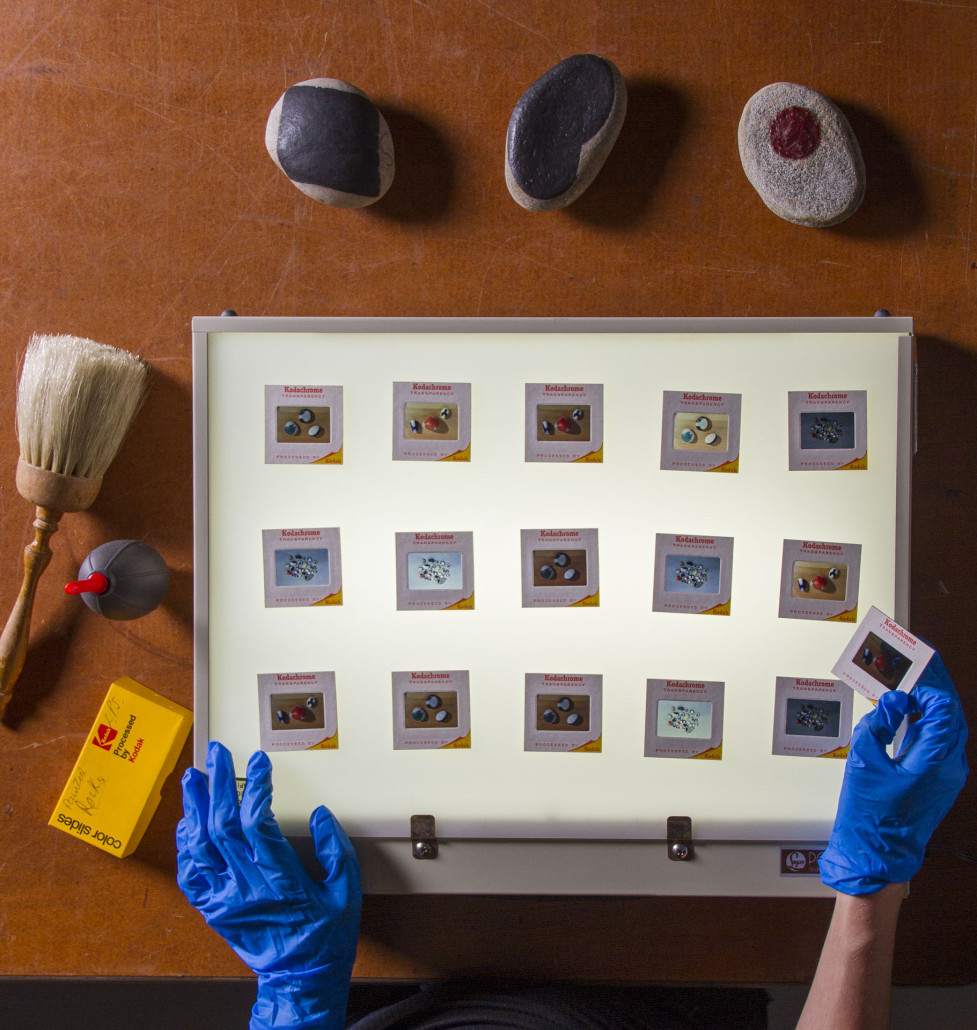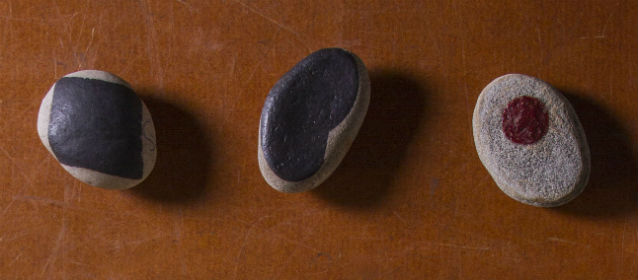
ST. PETERSBURG, Fla. – Among the impressive collection of American painter Leon Polk Smith’s work being offered at auction on March 13 are three unassuming items: simply hand-painted rocks.
These three unique rocks, along with the rest of the Leon Polk Smith collection, come directly from the estate of Robert Jamieson, Smith’s life partner and assistant.
Each smooth, oval-shaped rock is painted with a geometric or organic shape on the top and signed and dated by Smith on the bottom. It is believed that they were intended to be given as gifts or tokens of friendship to Smith’s acquaintances – a beautiful and original sentiment. Smith gathered the rocks along the shore of the Long Island Sound, near his and Jamieson’s home in Shoreham, N.Y.
As an artist, Smith was known for revolutionizing the limits of a canvas and playing with shapes, so it is not surprising that he viewed these rocks as potential canvasses for the bold shapes that characterize his work.
Both Smith’s life and art can be described as wonderfully vibrant. Born in 1906 in Indian Territory, what is now Oklahoma, Smith eventually found his way to New York to study at the Teacher’s College at Columbia University. He discovered a love of art during school, but chose to paint only as a hobby while he worked as a teacher for nearly 25 years. In a 1985 interview with Addison Parks for ARTS Magazine, Smith said, “I think I realized very quickly that I had always been an artist, and that that was what I wanted. That I would always keep it for myself, that I would never prostitute it, or do anything with it just for money.”
This desire to maintain the integrity of his work is what kept Smith from becoming a full- time professional artist for the earlier part of his life. Smith developed his true identity and style as an artist in the 1950s, when he was inspired by the divided spaces on baseballs and tennis balls pictured in a sports equipment catalog that was randomly delivered to his home. This unexpected inspiration culminated in a career that spectacularly explored space and color. Addison Parks writes of Smith’s work, “Still, more than anything else, more than its power to define our space and time, which is so tremendous it is sometimes hard to deal with, it is the poetry of color and shape in this work that makes it mean so much.”
Although simple in premise and execution, Smith’s painted rocks are nevertheless an extension of the “poetry of color and shape” that Parks refers to. They are a fun exploration of the juxtaposition between primitive and sophisticated, organic and geometric that characterizes Smith’s style.
Myers Fine Art, which is selling the collection, is also in possession of memorabilia from Leon Polk Smith and Robert Jamieson’s estate, including Kodak slides that depict Smith’s painted rock collection. The three rocks being offered at the auction are pictured in some of the slides from the estate.
The three painted rocks are being offered separately at the auction along with over 30 of Leon Polk Smith’s paintings, drawings, collages and sculptures. Each rock is estimated at $300-$500.
Although small in comparison to Smith’s usual works, the painted rocks are nonetheless lovely examples of the vision and genius of a beloved abstract artist.


